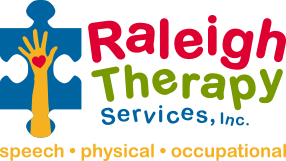Speech & Hearing Screenings for Children
 May is Better Speech and Hearing Month and now is the perfect time to spotlight the special role speech-language pathologists, more readily referred to as speech therapists, play in children’s lives. It’s easy to think that a speech therapist is someone who works with others to correct mispronounced words and help them speak—however, speech therapists do much, much more than that.
May is Better Speech and Hearing Month and now is the perfect time to spotlight the special role speech-language pathologists, more readily referred to as speech therapists, play in children’s lives. It’s easy to think that a speech therapist is someone who works with others to correct mispronounced words and help them speak—however, speech therapists do much, much more than that.
Speech-language pathologists are professional therapists who evaluate and treat speech, language and swallowing disorders. A pediatric speech-language pathologist may work with a child in any of the following areas:
- Feeding & Swallowing – safely eating, drinking, and swallowing
- Articulation– producing the correct speech sounds
- Voice– speaking with vocal quality, pitch, loudness, and resonance
- Expressive Language – using language to communicate functionally
- Receptive Language– understanding what is being communicated
- Pragmatics – using social language in order to convey needs and participate in conversations
- Fluency (Stuttering)– speaking using a normal flow and rhythm without interruptions
- Hearing – communicating in the presence of a hearing disorder
Preschool & Daycare Speech and Hearing Screenings
Your first introduction to a speech-language pathologist may actually be at your child’s preschool or daycare. It is a common practice for local speech-language pathologists to offer free speech and language screenings for young students at these early learning centers. With your consent, a speech therapist will conduct a brief screening to review your child’s articulation, language, voice, fluency, and hearing.
The free screening will provide a quick snapshot into your child’s speech and language skills by utilizing a research-based tool to indicate a pass/fail status. A hearing test may also be performed simultaneously. If your child fails his or her screening or hearing test, a more in-depth assessment is typically recommended to determine if a delay or disorder exists.
Some signs of speech and language disorders that speech-language pathologists will watch for in children include:
Feeding & Swallowing Disorders:
- Difficulty chewing
- Choking, coughing, or gagging on food and/or liquids
- Difficulty transitioning to solids or higher textured solids like meat
- Difficulty transitioning from bottle to cup
Speech Sound Disorders:
- Incorrect pronunciation of the letters p, b, m, h, and/or w by 1 to 2 years of age
- Incorrect pronunciation of the letters k, g, f, t, d, and/or n by 2 to 3 years of age
- Unclear speech to both familiar and unfamiliar listeners at 2 to 3 years of age
Voice Disorders:
- Speaking with a hoarse or breathy voice
- Speaking with a nasal voice
Language Disorders:
- Not smiling or interacting with others by 3 months of age
- Lack of babbling at 7 months of age
- Not using gestures by 12 months of age
- Inability to understand what others are saying between 7 months and 2 years of age
- Unable to say more than 50 words by 2 years of age
- Unable to combine words by 2 1/2 years of age
Fluency (Stuttering) Disorders:
- Frequently repeating parts of words or whole words at 2 1/2 to 3 years of age
- Stretching sounds out like “n-n-n-no” for “no” at 2 1/2 to 3 years of age
- Struggling to get sounds or words out by 2 1/2 to 3 years of age
Hearing Disorders:
- Lack of attention to sounds
- Not responding to name when called
- Inability to follow simple commands
Filed under: Awareness, Better Speech and Hearing, Parenting Tips, Raleigh Therapy Services, Speech and Language Development



